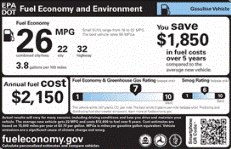Fuel Cell Vehicles

Fuel cell vehicles (FCVs) have the potential to significantly reduce our dependence on foreign oil and lower harmful emissions that contribute to climate change. FCVs run on hydrogen gas rather than gasoline and emit no harmful tailpipe emissions. Several challenges must be overcome before these vehicles will be competitive with conventional vehicles, but the potential benefits of this technology are substantial.
A Look Inside
FCVs look like conventional vehicles from the outside, but inside they contain technologically advanced components not found on today's vehicles. The most obvious difference is the fuel cell stack that converts hydrogen gas stored onboard with oxygen from the air into electricity to drive the electric motor that propels the vehicle. The major components of a typical FCV are illustrated below.











